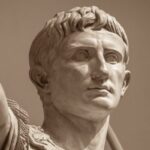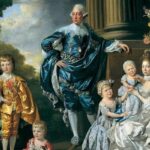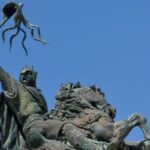We explain what an emperor is and what powers he has. Also, who were the most important emperors and empresses in history.
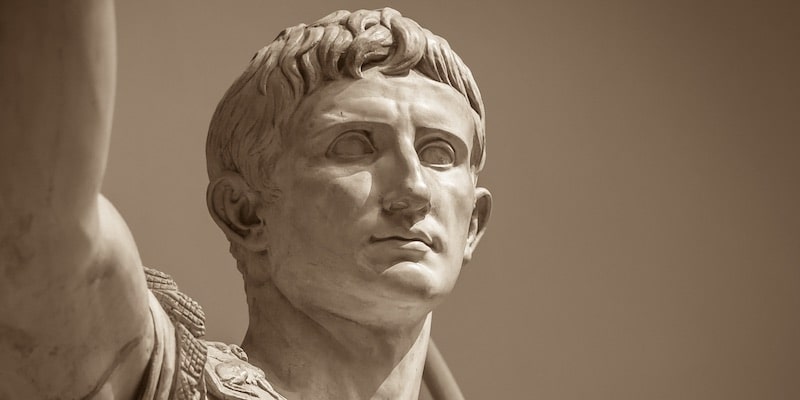
What is an emperor?
Emperor or empress is the title given to a ruler who exercises control over a large territory and different populations over those imposed through conquest or annexation. Originally, it was a title given to the rulers of the Roman Empire in ancient times and other monarchs of Europe in the Middle Ages.
In practice, an emperor was a monarch or king. He exercised the highest government functions and had absolute authority over the rest of the citizens or subjects. However, The title of emperor was considered a dignity higher than that of king because he ruled over different kingdoms or nations. For example, the monarch of the Austro-Hungarian Empire ruled over the kingdoms of Austria and Hungary.
Throughout history, there have been numerous emperors and empresses of great states. Among the most notable are the Roman emperors Augustus and Constantine; Amenhotep IV and Cleopatra of Ancient Egypt; Charlemagne and Charles V of the Holy Roman Empire; Genghis Khan of the Mongol Empire; Montezuma of the Aztec Empire; Catherine II of Russia; Napoleon of France, and Victory of the British Empire.
Current use of the term: Currently, the term emperor It is used in the social sciences to talk about a particular type of ruler, regardless of whether they have another specific name in each case. For example, in Ancient Egypt (3100-30 BC), the emperor or absolute monarch was called pharaoh; in the Mongol Empire (1206-1368 AD), he was called Great Khan; and in the Russian Empire (1721-1917 AD), he was called tsar.
- See also: Absolutism
Origin of the term emperor
The term emperor comes from the Latin verb I will prevail, What does “command troops” mean?. In Ancient Rome, during the time of the Republic (509-27 BC), there were three types of power: potestas (the decision-making power of the magistrates), auctorites (the command exercised by someone due to their great experience or wisdom) and empire (the power of military force).
At that time, the Senate handed over the dignity of emperor to the generals who led successful battles. In the 1st century BC. C., the consul Octavian concentrated the different powers and established himself as absolute ruler of Rome. Although he called himself princeps either Augustushe is considered the first Roman emperor because he founded the first imperial dynasty.
Powers of an emperor
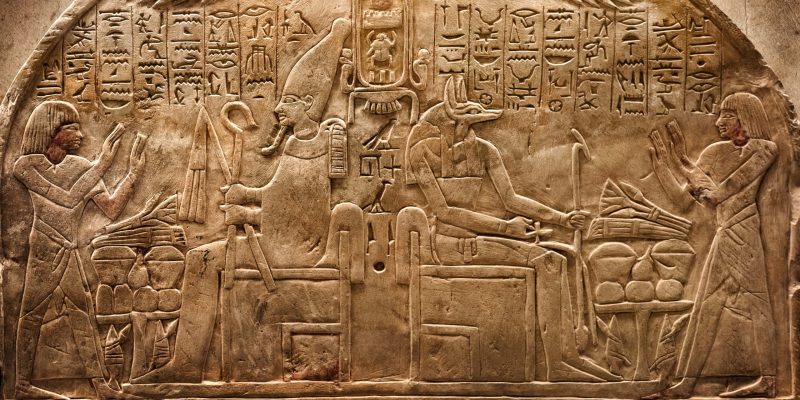
The powers of an emperor depended on the government structure of each empire. However, in most cases they concentrated power and were the highest authority in each of the areas of government.
In this sense, the emperors were characterized by:
- Use of force. The emperor was the ultimate authority over the use of force, whether in internal affairs (police) or external affairs (armies).
- religious authority. Typically, he established his authority over the religious order, the priestly class, or even the organization of celebrations. In some cases, the emperor's power was considered sacred and a special cult existed in his honor.
- legislative branch. As the highest authority, in many cases the emperor could create, modify or abolish laws. Sometimes, he had to do so in agreement with other government magistrates.
- government authority. The emperor had the power to make decisions in all areas of government and, among them, he appointed his officials, assistants or governors under his authority. In addition, it could grant privileges to certain families or institutions.
The scope of these powers depended on the nature of each empire and the political organization of each society. For example, in Ancient Egypt, the pharaoh was considered an intermediary between the Egyptian population and the gods. Therefore, he had an almost divine character and absolute authority over all matters of government. On the other hand, in the British Empire, the top rulers were kings and their power was limited by Parliament.
The Roman Emperors
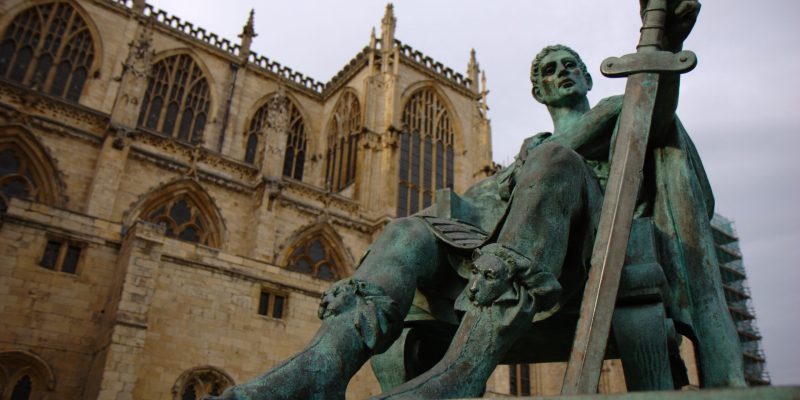
In the imperial era (27 BC-395 AD) of Ancient Rome, Around eighty emperors succeeded one another until their division in Western Roman Empire (with capital in Rome) and Eastern Roman Empire (with capital in Constantinople). The exact number is debated because there were numerous civil wars for power and, in some cases, pretenders declared themselves emperors but were unable to remain in power.
In the western empire, there were fifteen other emperors, until the year 476 AD. C. Romulus Augustulus was overthrown by the German king Odoacer and the imperial structure disintegrated. Instead, the Eastern Empire (also known as the Byzantine Empire) lasted until 1453 AD. C., when it was invaded by the Ottoman Empire. In total, he had seventy-seven emperors and three empresses.
Among the most notable Roman emperors are:
- Augustus (63 BC-AD 14). Gaius Octavius Augustus was the first Roman emperor, ruler of Rome for four decades. He was heir to Julius Caesar, whose assassination in 44 BC. C. gave rise to a military triumvirate government, made up of Marco Antonio, Lepidus and Augustus himself. After the death of the first and the exile of the second, Augustus consolidated his power and managed to prevail over the Senate.
- Tiberius (42 BC-37 AD). Tiberius Iulius Caesar Augustus was the second Roman emperor and is known as one of the greatest generals. During his reign, the empire expanded its borders. Jesus of Nazareth was also crucified in Galilee.
- Caligula (12-41 AD). Gaius Iulius Caesar Augustus Germanicus was the third Roman emperor, younger brother of Tiberius, from whom he inherited the throne jointly with his cousin Tiberius Gemelos. After getting rid of the latter, Caligula reigned scandalously, accused of incestuous and unworthy relationships. His government undertook a series of public and urban reforms that left the empire bankrupt.
- Nero (37-68 AD). Nero Claudius Caesar Augustus Germanicus was famous for his reign of extravagance and tyranny, and for his persecution of Christians. The myth says that while Rome burned, Nero played his lyre. He was deposed by a coup d'état.
- Hadrian (76-138 AD). Publius Aelius Hadrianicus was famous for his love of philosophy and his good administration of government. He carried out major reforms, which earned him strong enmity with the aristocratic elites. Under his empire, Christians and foreigners enjoyed greater tolerance and the condition of slaves was improved.
- Marcus Aurelius (121-180 AD). Marcus Aurelius Antoninus was, like Hadrian, known for his Stoic philosophy. During his government, he had to face several wars: against the Parthian Empire, against Germanic tribes in northern Europe and against different internal revolts in the east of the empire.
- Constantine I (280-337 AD). Flavius Valerius Constantinus was the first Roman emperor to grant freedom of worship to all religions, and he was also the first to convert to Christianity.
Great emperors in history
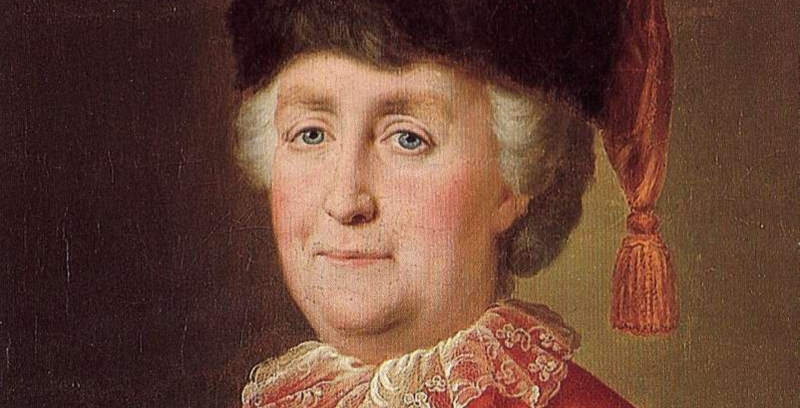
Throughout history, there were many imperial rulers who stood out for undertaking extensive conquests, defending their empires in emergency situations, carrying out major internal reforms, or even encouraging the development of the arts and culture of their civilization.
In each era, different emperors and empresses stood out:
- Amenhotep IV (c. 1352-1335 BC. C.). Also known as Akhenaten, he was a pharaoh of Ancient Egypt who carried out a great religious reform and attempted to impose the cult of the god Aten as the only official deity of the State (instead of the traditional polytheistic cult that characterized Egyptian civilization).
- Xerxes I (519-465 BC). Successor of Darius I in command of the Persian Empire, he was a member of the Achaemenid dynasty and an enemy of the Greek polis, which he tried to conquer during the Second Medical War.
- Alexander the Great (356-323 BC). Also called Alexander III of Macedonia, he was a famous soldier who held the titles of king of Macedonia, hegemon of Greece, pharaoh of Egypt and great king of Media and Persia. He extended the empire from Greece to the Indus Valley and Egypt, and spread Hellenistic culture throughout the region.
- Justinian I the Great (482-565 AD). Emperor of the Eastern Roman Empire, he dedicated his reign to attempting to restore the empire's former greatness. He reconquered part of the lost territories in the West, carried out legislative reforms and encouraged the development of Byzantine culture.
- Charlemagne (742-814 AD). He was king of the Franks and emperor of the Holy Roman Empire. In the year 800, he was crowned Imperator Augustus after his conquest of Italy, and founded the French and German royal dynasties.
- Genghis Khan (1162-1227 AD). He was the founder of the Mongol Empire. He unified the nomadic Mongol tribes and began a series of conquest campaigns that led him to form the largest empire of contiguous territories in history: from eastern Europe to the Pacific Ocean in Asia, and from Siberia to Mesopotamia. In addition, he established laws for the Mongols, developed writing for their language, and promoted trade between Europe and Asia.
- Montezuma (c. 1466-1521 AD. C.). Was huey tlatoani (top ruler) of the Aztec Empire. He was a great soldier, priest of the god Huitzilopochtli and had an excellent education. As emperor, he quelled different internal rebellions and managed to consolidate state power in different regions. He died in the context of the Spanish conquest of the Aztec Empire.
- Louis XIV of France (1638-1715 AD). Nicknamed “Sun King”, he was the absolute king of France and Navarre. His reign was the longest in history and he became the typical image of the absolutist king. His phrase “The State is me” is famous. During his reign, France exercised its political and military power over Europe, and had colonies in America and Asia.
- Catherine II of Russia (1729-1796 AD). She was Tsarina of Russia and promoted the greatness of the empire through different reforms and conquests. It expanded its borders in the south and west, and acquired an outlet to the Black Sea after clashing with the Ottoman Empire in 1768. Among these lands, it conquered part of the former Eastern Roman Empire and rebuilt its legacy. In addition, it promoted the political, economic and cultural modernization of the empire.
- Napoleon Bonaparte (1769-1821 AD). He was a military leader of the French Revolution who was proclaimed first consul of the Republic and then emperor of the French in 1804. He wanted to militarily conquer Europe, Egypt and Syria. The Napoleonic Wars had consequences throughout the world. He was defeated at the Battle of Waterloo in 1815. After his death, the monarchy was restored in France under the command of Louis XVIII.
- Victory of the United Kingdom (1819-1901 AD). She was queen of the British Empire at a time of great political, economic and cultural transformations. At that time, the Empire was organized as a constitutional monarchy and the queen's power was limited by Parliament. During his reign, the British Empire became one of the world's leading powers.
Empires today

Historians call imperialism to the period of history that developed between the years 1871 and 1914. This era was characterized by the rise of European colonial empires and the radicalization of their competition for territories, resources and markets. The main consequence of these European policies was the outbreak of the First World War (1914-1918).
At the end of this war, three of the greatest European empires disintegrated: the German Empire, the Austro-Hungarian Empire, and the Ottoman Empire. Furthermore, in 1917, the Russian Empire went through the Russian Revolution, and in its place a few years later the communist government was established, giving rise to the Soviet Union.
On the other hand, In the 1920s and 1930s, nationalist and independence movements expanded in colonies in Asia and Africa which were under the control of the British and French empires. However, it was only after World War II (1939-1945) that most of these nations managed to regain their independence. This stage is known as the “Asian and African decolonization process.”
Today, there are no states that recognize themselves as empires or rulers who call themselves emperors. However, due to their political, economic and cultural influence, some specialists support the idea that China, the United States and Russia can be considered imperial powers.
References
- Ackerman, M., Schroeder, M.J., & Terry, J. (Eds.). (2008). Caesar, Augustus; Imperial Cult, Roman; Constantine the Great; Roman Empire. Encyclopedia of World History, vol. 1: Prehistoric Era to 600 ce Facts on File.
- Ackerman, M., Schroeder, M.J., & Terry, J. (Eds.). (2008). Byzantine Empire; Holy Roman Empire; Genghis Khan. Encyclopedia of World History, vol. 2: The Expanding World. 600 ce to 1449. Facts on File.
- Ackerman, M., Schroeder, M.J., & Terry, J. (Eds.). (2008). Montezuma II; Louis XIV. Encyclopedia of World History, vol. 3: The First Global Age. 1450-1750. Facts on File.
- Ackerman, M., Schroeder, M.J., & Terry, J. (Eds.). (2008). Catherine the Great; Napoleon I; Victory. Encyclopedia of World History, vol. 4: Age of Revolution and Empire. 1750 to 1899. Facts on File.
- The Editors of Encyclopaedia Britannica. (2024). Emperor. Encyclopedia Britannica. https://www.britannica.com/

